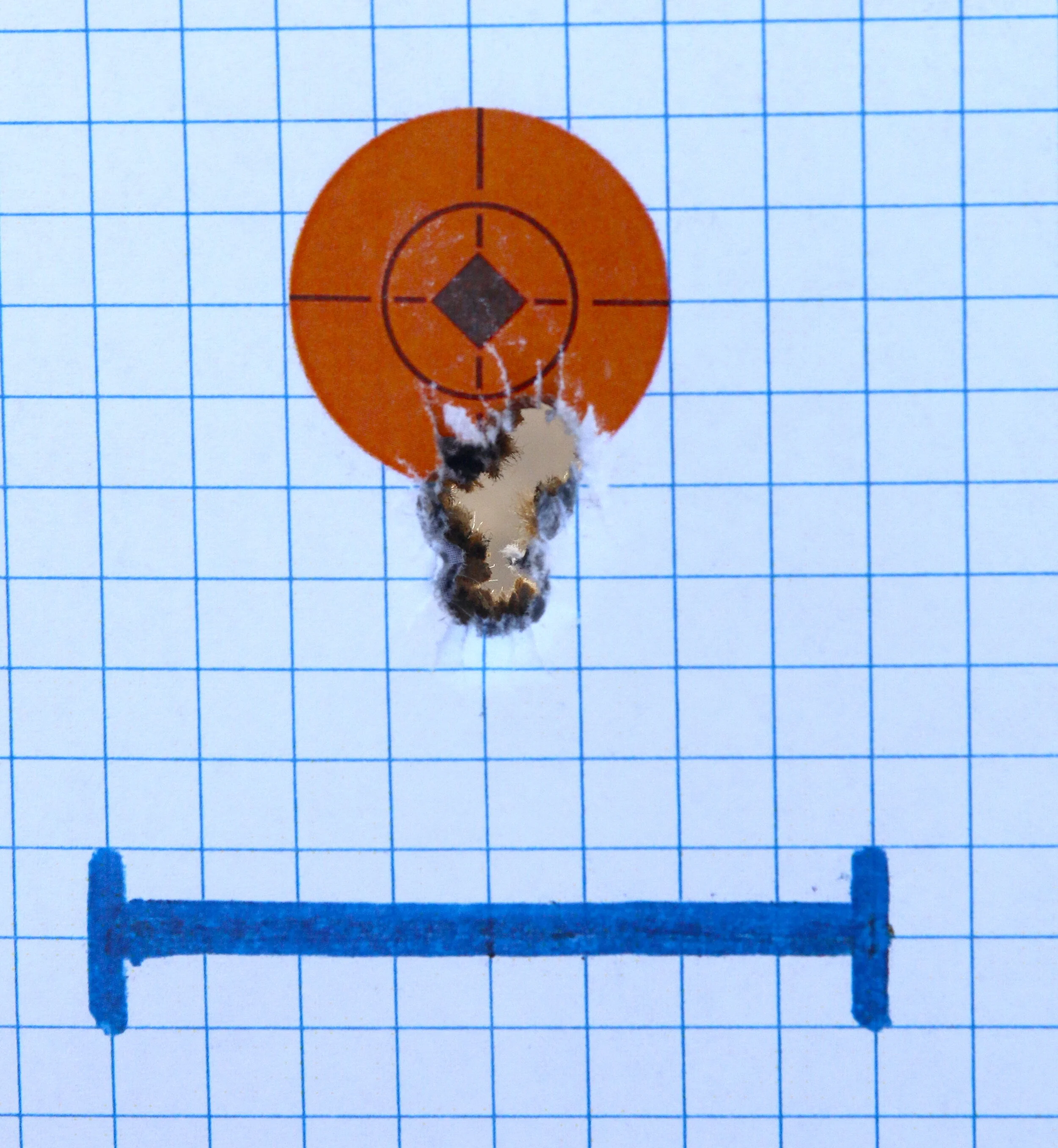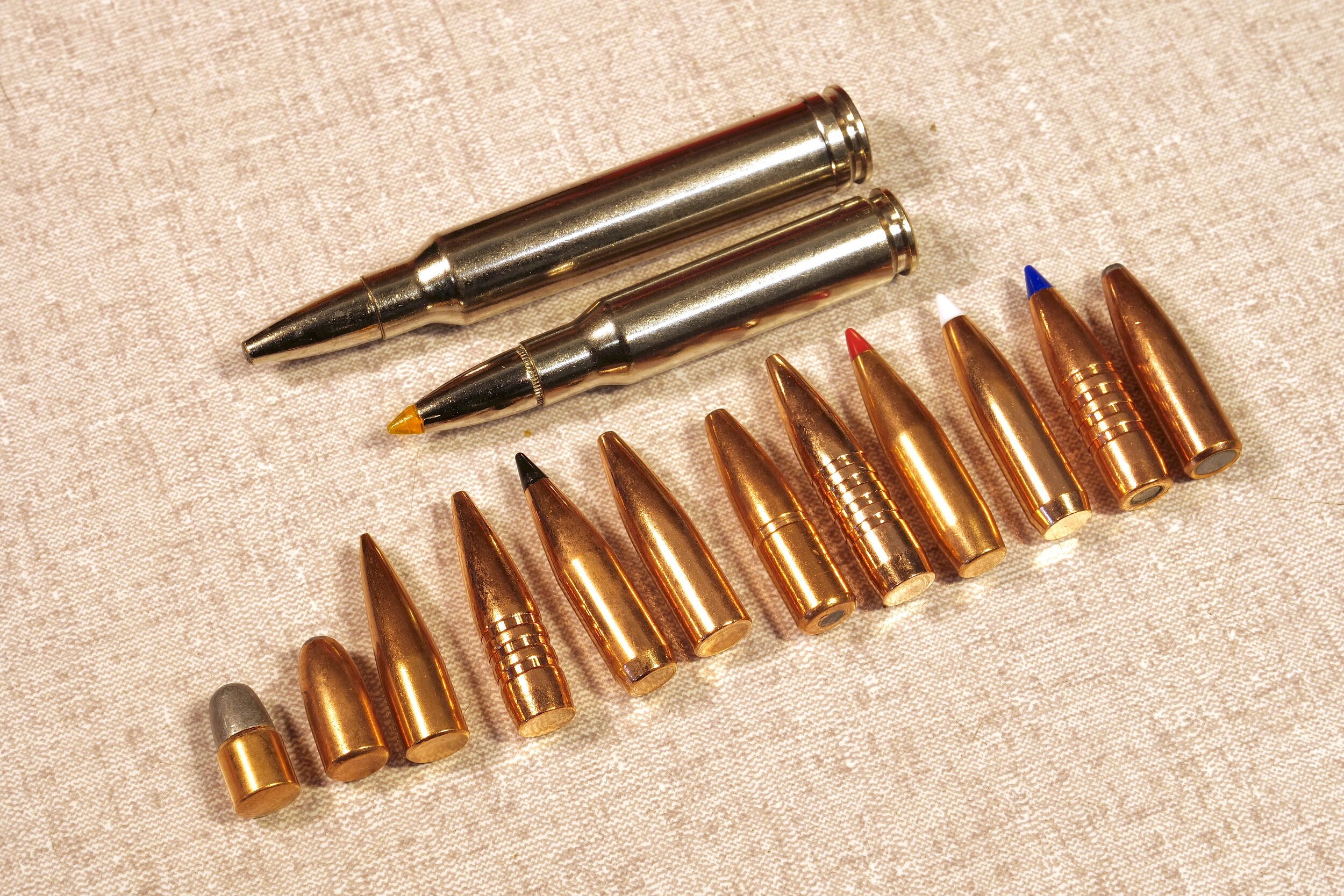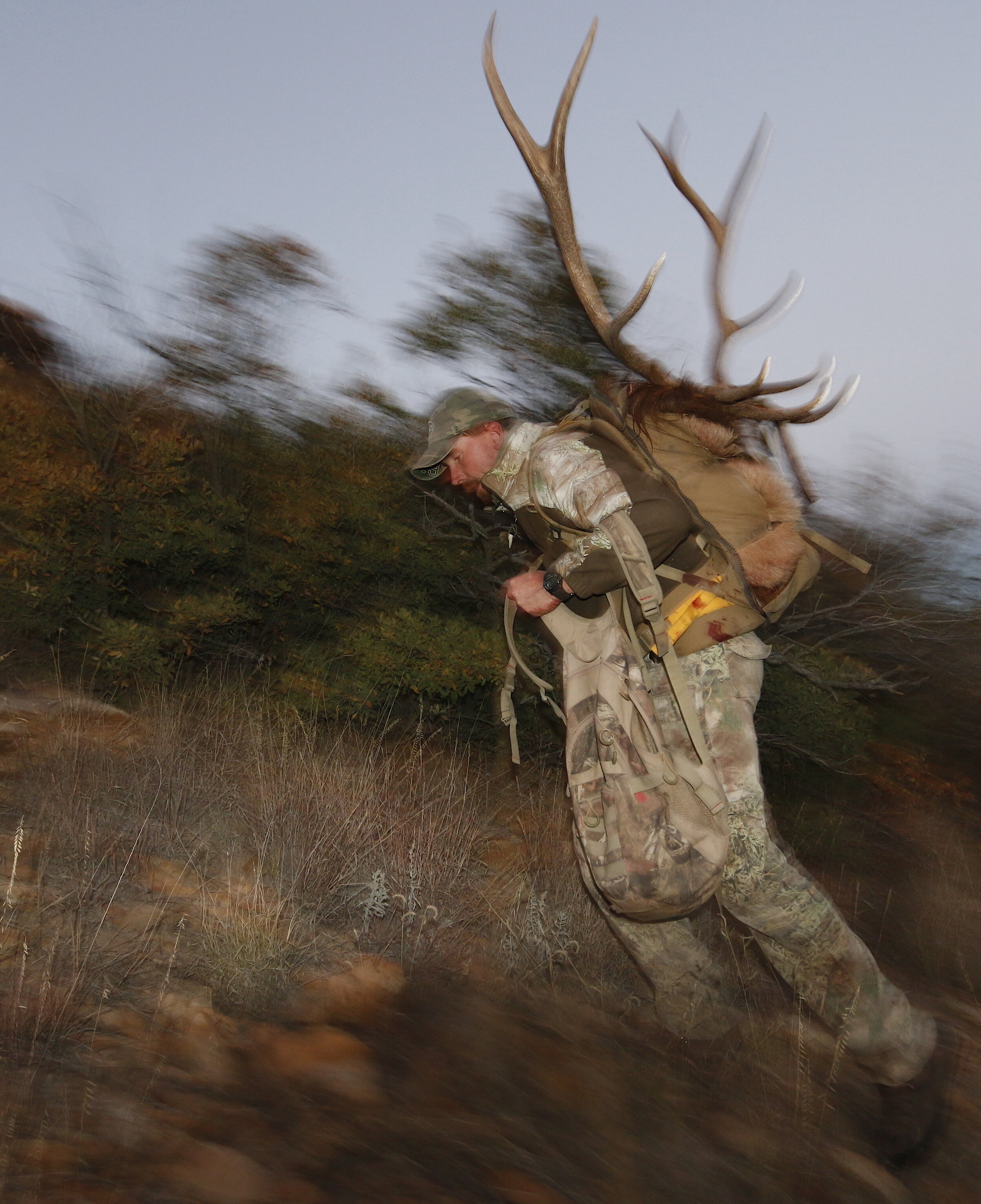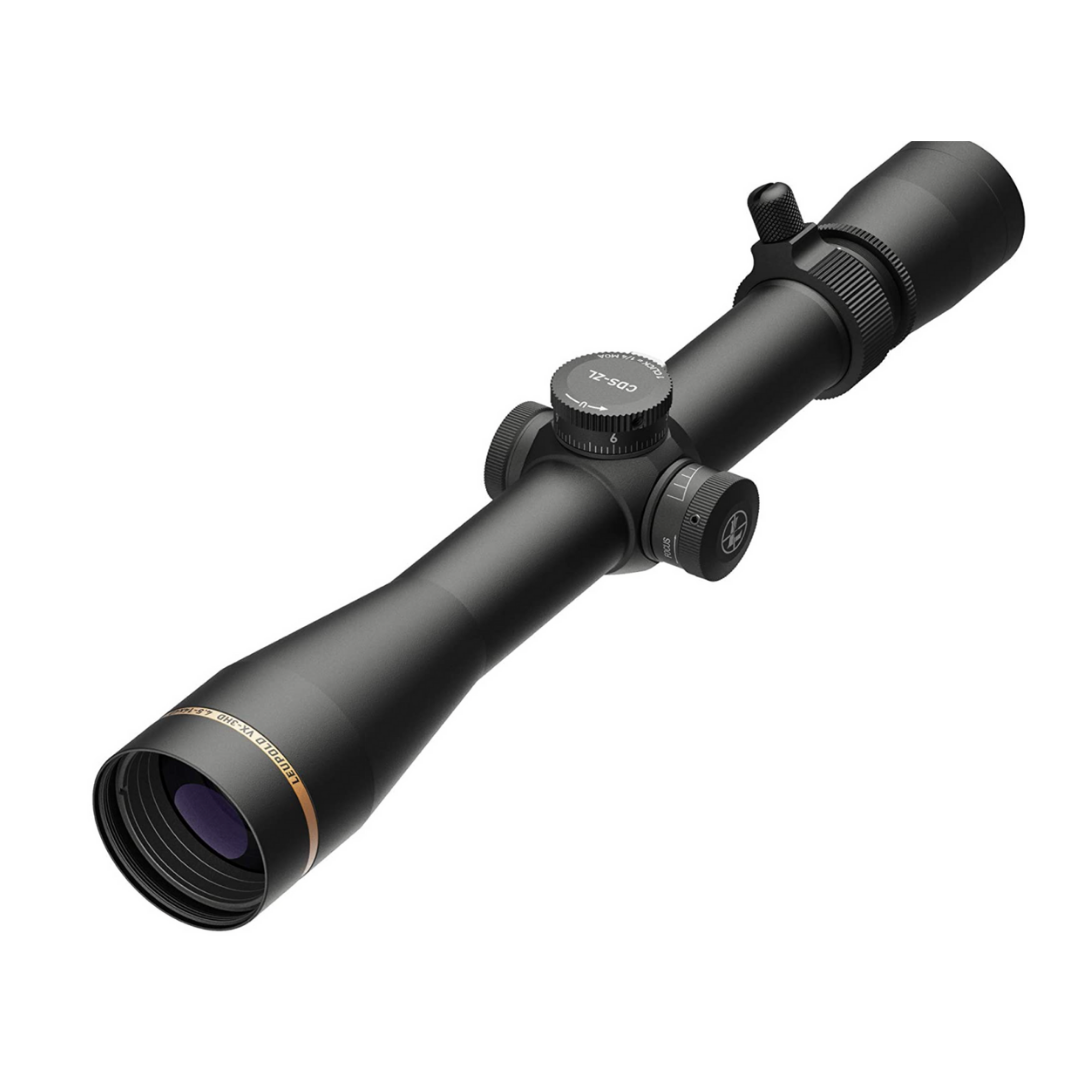308 Winchester Myths and Magic
The 308 Winchester is not all it’s cracked up to be. Through no fault of its own, it swims in a murky fog of myth and misconception, so don’t let its reputation blind you to reality.
On the other hand the 308 has some redeeming qualities that might — just might — make it the perfect round for someone. Maybe you?
The 308 Winchester is an efficient, practical, short-action round. It just labors under too many myths and misconceptions.
What the 308 Winchester Is Not
Contrary to conventional wisdom, the 308 is not:
As fast and powerful as the 30-06 Springfield
Inherently accurate
A superior long-range sniper round
Less expensive than similar “deer hunting” cartridges
The most popular rifle cartridge in the U.S.
To bolster these claims, let’s examine them in order:
Equal to the 30-06? Uh, no. Impossible. That’s like saying a 22-ounce framing hammer is the same as a 30-ounce framing hammer. More succinctly, the 308 has been accurately described as a “30-06 Short.” Because it is. Anything it can do the 30-06 can do at least 100 fps faster.
A side-by-side comparison shows why the 308 Winchester cannot equal the ballistic performance of the 30-06.
Before you sue me because Winchester supposedly formulated the 308 from the 300 Savage, consider that the Savage, concocted in 1920, appears to wear the same rim diameter as the 30-06 (.473”.) And we know which of those two came first. But the 30-06 is itself suspiciously similar to the 7x57 Mauser of 1892 (.473” rim) which has the same rim diameter as the 308 Winchester of 1952…
The truth of all these case designs is that they use the basic dimension at the heart of the 7x57mm and merely go long and short from there, changing body tapers, shoulder angles, neck lengths, and case lengths. Hardly matters whether they started squeezing and stretching from one case or another. But, if we want to be historically accurate, the 308 Winchester emerged from the U.S. military’s T65 project at Frankford Arsenal in the late 1940s. Engineers were testing the 300 Savage as a possible replacement for the 30-06. They wanted an efficient auto-loading cartridge shorter than the 30-06 for weight and space savings, yet with sufficient terminal performance to effect the same end. The 300 Savage case seemed to deliver the goods, but engineers didn’t like its taper. They discovered they could easily eliminate it by starting with the straighter-walled 30-06 and shortening it. I guess Winchester and other ammo makers were privy to this information and perhaps even contributors to the developments. Rather than wait around for the red tape to run out, they grabbed the new, short 30-06 case and introduced it as the civilian 308 Winchester in 1952. NATO finally accepted it as the 7.62x51mm NATO in 1954 but the U.S. military waited until 1957 before adopting it in the M14. Hardly seemed worth the trouble because it was upstaged by the pipsqueak 5.56x45mm (223 Rem.) and the M16 (AR-15 platform) just five to seven years later.
The 300 Savage (L) may have inspired the 308 Winchester, but the 30-06 was reportedly shortened to become the 308 Winchester case.
The upshot to all this is the 30-06 Short, aka 308 Winchester, with 12 to 16 grains less powder volume than the 30-06. It can be loaded to come within 50 fps or so with 150-grain bullets, but step up to 175-grain and heavier, high B.C. bullets and the 308 runs behind by about 200 fps.
Why the 308 Winchester is Not Inherently Accurate
What about the 308 Winchester being inherently accurate? Pffft. An engineer might be able to prove how one case design offers a minuscule accuracy advantage over another sufficient to be appreciated by a benchrest target shooter, but in a hunting rifle? Case design contribution to accuracy moves to the back of a long bus. More important are perfect bullet balance, straight and consistent cases, precise chamber dimensions, barrel concentricity… The shape of the brass reservoir holding the primer, powder, and bullet contributes little to nothing EXCEPT in the consistency of its construction.
Yes, the 308 Win. is an accurate round, but no more than any other 308-caliber cartridge that is build to match-grade standards and fired in a match-grade target rifle. All of these are 30-caliber cartridges. The 308 is 4th from the left.
Here is where the accuracy myth gains some traction. Because this short round fired the same high-quality target bullets as the 30-06 and 300 H&H Mag., both of which had won many target competitions, but with less recoil, competition shooters started shooting it. And perfecting it. Careful handloads. Select target bullets. Low recoil. As its reputation on the range grew, manufacturers began focusing on better and better quality control. Match-Grade became a thing. You never saw Match Grade 300 Savage or 270 Winchester or 7x57mm Mauser ammo, but match grade 308 Winchester blossomed right along with heavy barreled, match-grade 308 Winchester rifles. This overall focus on concentricity and precision is how the 308 Winchester earned its accuracy reputation. It’s not the shape of the case.
Busting the Myth of the Perfect Sniper Round
Superior Sniper Cartridge? Hardly. As any ballistics aficionado might guess, the 7.62 NATO hung around (and is still hanging around) in specialty rifles, many set up for sniping. The military’s 175-grain sniper bullet remained super sonic to 1,000 yards and resisted wind deflection a lot better than did the little 5.56. And that’s where much of the 308’s sniper reputation began to emerge.
Sure, chamber your most accurate military rifles for 7.62 NATO and build optimum ammo for them and there’s your sniper rifle, yet the most successful sniper in the Vietnam era, Carlos “White Feather” Hathcock, chose to carry a Winchester Model 70 chambered 30-06 Springfield. Our modern snipers generally employ 300 Win. Mag., 338 Lapua, 50 BMG and others mainly because the 7.62 NATO just doesn’t have the reach.
The 308 Winchester is certainly chambered for a lot of long-range rifles, but many, many other cartridges provide better long range performance.
This doesn’t mean the 308 Winchester/7.62 NATO is never chambered in military sniping platforms around the world. It is. Often. But I’m guessing this is due more to tradition/inertia, availability of ammo, and ease of firing for the majority of soldiers. In addition, its sniping use is probably limited to about 800 yards. Beyond that wind deflection limits effectiveness. I suspect the reason so many police units use the 308 Winchester as their sniper platform is similarly a mix of tradition and convenience. In addition, urban precision shooting is a relatively short-range affair, not 1,000 yards. “Sniper rifle” seems to be loosely defined.
Why So Many Varmint, Sniper, and Long-Range Rifles Are Chambered 308 Winchester
If the 308 Winchester is not an outstanding long range option, why is nearly every brand of rifle built in a match, varmint, long-range platform chambered in 308 Winchester? Tradition. The band wagon effect. Because the 308 developed its precision shooter reputation on target ranges early on, rifle builders began focusing on it. The more “308 target grade” rifles shooters saw the more they assumed THAT was the best cartridge. And the more they demanded super accurate, high-quality ammo, the more ammo makers concentrated on building it. The whole program became a perpetual motion machine. Never mind that in the late 1970s new wildcats like the 22 and 6mm PPCs were breaking old 308 Winchester accuracy records. Never mind that metallic silhouette shooters were finding the 7mm-08 and 260 Remingtons better options. Never mind that really long range shooters were pushing 300 magnums, 338 Lapuas, and 50 BMGs. It wasn’t until the 6.5 Creedmoor finally hit its stride around 2015 that 308 Winchester “snipers” finally tumbled to the idea there might be better options.
Groups like this are the result of rifles and ammo being built to match-grade standards in 308 Win.
Yes, the 308 Winchester is a relatively mild recoiling cartridge for precision shooting, but there are many others with similar or less recoil that turn out better ballistics. Which ones? Any that push bullets of equal or better B.C. at equal or better muzzle velocities. Just one example is that infamous 6.5 Creedmoor, as the following ballistic comparison indicates:
6.5 Creedmoor, 142-gr. Nosler ABLR, B.C. .625
308 Winchester, 168-gr. Berger Hybrid Target, B.C. .519
Study those drop (Elevation) and drift (Windage) columns and you quickly realize how poorly the 308 matches up to its little 6.5mm cousin. At 1,000 yards the 308 drops 53 inches MORE and the wind deflects it 22 inches MORE. The lighter .264 bullet even carries more energy far downrange. Sorry if we hurt anyone’s pride, but it is what it is. The 308 Winchester is just not a top drawer long-range cartridge.
At Least 308 Ammo is Inexpensive, Right?
But how about that inexpensive ammo argument? Surely that’s a feather in the 308 Winchester cap? Well, sort of. Because 308 ammo is ubiquitous and produced in large quantities, it often sells for less than cartridges of similar size and power. The volume sales phenomenon. There is military surplus ammo (FMJ) and military surplus 7.62 cases that are “rebuilt.” While such ammo is indeed inexpensive, it’s also cheap. Yeah, it goes bang and flies downrange, but it’s hardly the stuff from which group records are made. And it’s rarely suitable or legal for hunting. Quality target and hunting ammo in 308 Winchester is just as pricey as other rounds with similar quality and quantities of brass, powder, and bullet mass.
Miss Popularity — Everybody’s Favorite?
Finally we come to the most popular cartridge in the U.S. The 22 Long Rifle. OK, that’s a bit of a trick answer. If we stick with centerfires, the 308 Winchester is… still not the winner. That title goes to the 223 Remington. But the 308 isn’t far behind. It’s long held onto 2nd place, but recent sales numbers suggest the 6.5 Creedmoor has replaced it. Not that this proves anything of real value to a shooter. The 30-30 Winchester outsells the 270 Winchester by a wide margin, too, but that hardly means it’s the superior ballistic performer. Ditto the 308 versus a large number of other cartridges.
Real 308 Winchester Attributes Worth Celebrating
Now that I’ve chastised the poor 308 Winchester and demoralized its millions of fans, I shall try to redeem myself by exposing the magic of this cartridge.
It isn’t really magic, of course, but is somewhat magical. This rather stodgy looking, run-of-the-mill short-action round strikes a remarkable do-it-all balance. Here are some of its many wonderful attributes:
Virtually every bullet style and type is or has been loaded on the 308 Winchester. Here’s one of Hornady’s all-copper GMX hollow points recovered from a feral hog.
Short-action. I don’t find this a huge benefit, but it does result in rifles that are about 1/2” shorter and a few ounces lighter. It’s relatively small powder supply can push bullets near peak muzzle velocity in relatively short barrels, too. In tight corners and tighter situations, the quick cycling speed could make a difference. And the inherently stiffer actions of a short-action have been proven to increase accuracy.
Moderate Recoil. Figure about 18 f-p in an 8-pound rifle throwing a 150-grain bullet. The 30-06 would add about 4 f-p of shoulder punch to that.
Wide Variety of Loads. There are literally hundreds of options in factory loaded 308 Winchester ammo. You’ll find bullets from 110-grains to 200-grains in every shape, material and construction. Carefully built, match-grade ammo is easy to find, too, allowing shooters to get double duty out of some hunting rifles.
Handloaders can take full advantage of the versatility of the 308 Winchester. It shoots the same bullets as the 300 Win. Mag., just not as fast.
Versatile Applications. You know all those bullets and loads above? Bullets of 110-grains to 130 grains make the 308 a pretty good option for varmints and fur. Fairly light bullets around 130 grains can be pushed to 3,250 fps and extending MPBR on an 8-inch target to 340 yards. Pronghorn hunting, anyone? Sturdy 180- to 200-grain bullets nudged 2,600- to 2,400 fps kick out 2,700-f-p muzzle energy for deep penetration on large game at close range. Moose come to mind.
A Mossberg Patriot rifle in 308 Winchester wielded by my friend Linda Powell made it possible for guide and taxidermist Chuck Sharp to pack out this elk.
Lots of rifles. This has nothing to do with the cartridges inherent qualities, but it does make it more likely that you can find the perfect used rifle at a good price. Also, virtually every manufacturer offers rifles chambered 308 Win. And in every format. Bolt actions, lever-actions, pumps (well, used ones now,) break-actions, falling blocks, auto-loaders. The AR-10 platform was designed specifically for the 308 Win.
Long Barrel Life. Absolutely. For anyone hoping to pump thousands of rounds through a rifle without turning accuracy from grouping to patterning, the 308 Winchester is your baby. The ratio of its powder volume to bore diameter enables it to retain good to great accuracy for 5,000 rounds, sometimes double that in the hands of a careful shooter.
Available Everywhere. Well, when there’s not serious panic buying you can usually find at least some 308 ammo anywhere ammo is sold.
Lots of brass for handloading. Oh yeah. And it can be necked down or up to create several other short action cartridges. Lot of bullet options for reloading. Handloaders will find not just dozens of bullet options, but nearly as many powders that’ll work in the 308 Win.
The 308 Winchester, center, is not only widely available, but widely versatile in that it can be necked up and down to create (L. to R.) the 243 Win., 260 Rem., 7mm-08 Rem., 338 Fed., and 358 Win.
Goldilocks. Not to warm, not too cold. Not to big, not too small. There are several cartridges that fit this description, but the 308 Winchester probably epitomizes it.
Conclusion:
The poor 308 Winchester’s only legitimate problem is its chorus of fans who sometimes tend to exaggerate its performance. Guess we can’t blame them. Enthusiasm is a good thing. The cartridge itself, despite the myths surrounding it and its obvious shortcomings, really is a remarkably effective, versatile round.
Almost like a 30-06 Short.
Though he hates to admit it, the author has borrowed several 308 Winchesters to hunt and tag a number of big game animals around the world.







































